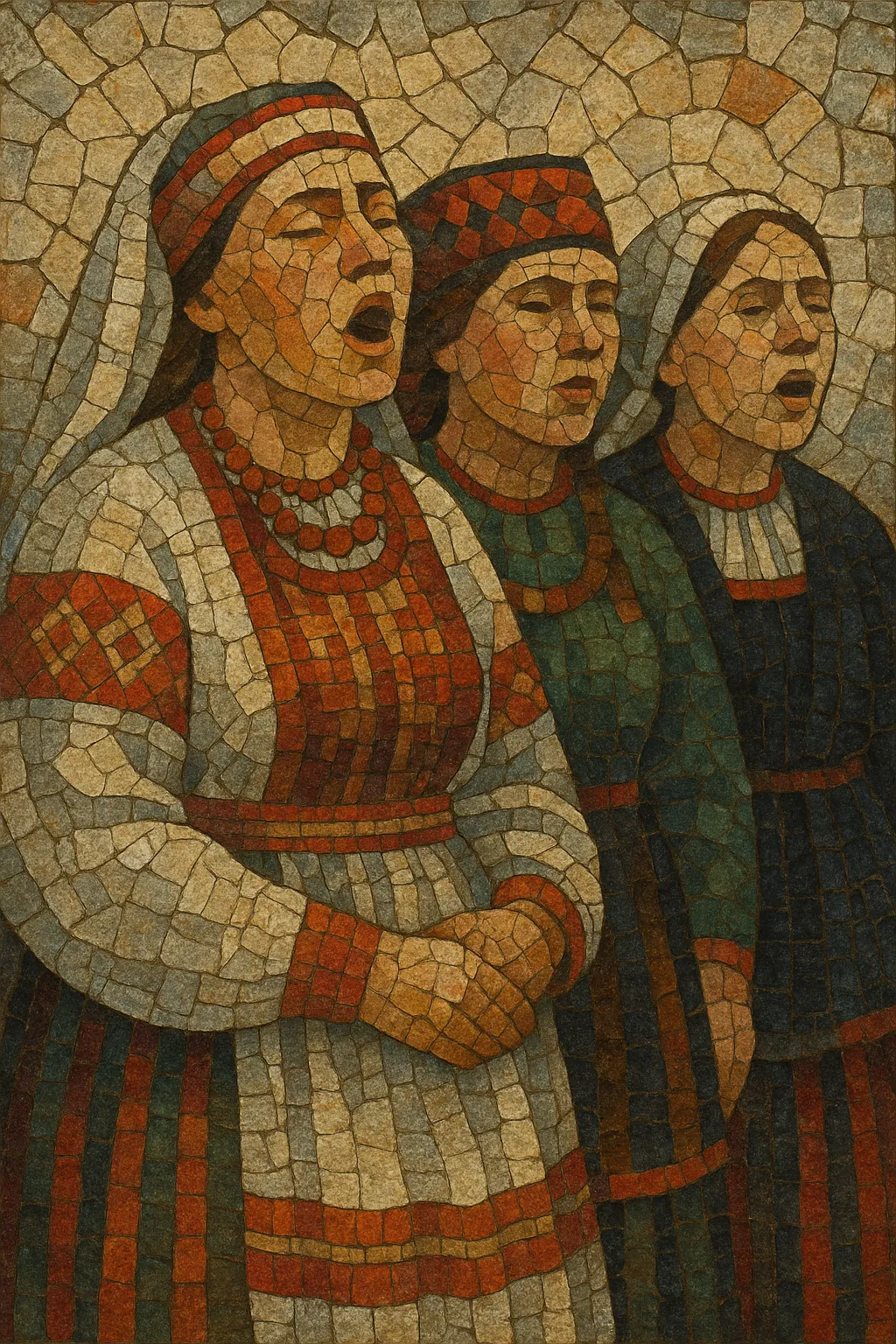Seto leelo is a traditional multipart singing style of the Seto people from the Setomaa border region in southeastern Estonia. It is characterized by a powerful lead singer, often called a song mother, who intones verses that the choir answers in tight, droning harmony.
Musically, leelo features a bourdon-like drone and parallel parts that create a resonant, slightly rough polyphony. The verses are built in the alliterative runo-verse tradition, with incremental repetition, formulaic lines, and space for improvised text.
Leelo is performed mostly a cappella by women’s choirs (with occasional men’s ensembles), often in traditional dress during festivals, rites, and community gatherings. The style is both ceremonial and communal, preserving language, memory, and identity, and it has been recognized by UNESCO as part of the Intangible Cultural Heritage of Humanity.
Seto leelo grew out of Finnic runo-song traditions shared across the eastern Baltic, taking distinctive shape among Seto communities along today’s Estonian–Russian border. Its core features—lead-and-chorus antiphony, a sustained drone, and tightly clustered intervals—likely coalesced over centuries in village ritual and seasonal work contexts.
By the late 1800s and early 1900s, collectors began to write down and record Seto songs. Tradition-bearers such as Hilana Taarka and Anne Vabarna became emblematic of the style, the latter famously composing the epic “Peko.” Choir-based performance practice and the figure of the “song mother” were firmly established.
Political upheavals and modernization challenged community lifeways, yet leelo remained central at local festivals, weddings, and church- or calendar-related events. Amateur choirs and cultural societies helped maintain continuity, while radio and later recordings brought the sound beyond Setomaa.
From the late 20th century onward, Estonia’s folk revival invigorated leelo through festivals, choir competitions, and new ensembles. In 2009, UNESCO recognized Seto leelo as Intangible Cultural Heritage, further supporting transmission. Contemporary artists and bands draw on leelo’s textures and poetry, bringing the idiom to new audiences while community choirs safeguard its core practice.


